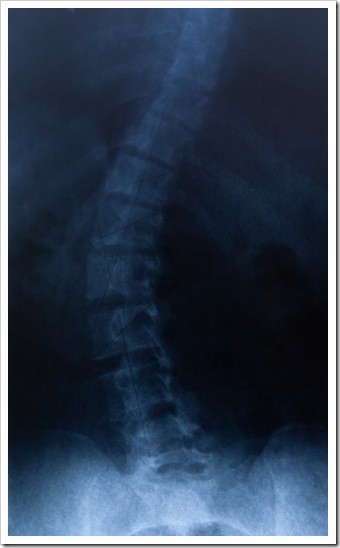 Scoliosis begins in childhood and describes a condition in which the spine curves sideways, causing stiffness and pain. It is known as an idiopathic disease, meaning its cause is unknown. Only 2% of the population is affected by scoliosis, which is more common in females. Detected early, treatment for scoliosis will prevent it from getting worse over time.
Scoliosis begins in childhood and describes a condition in which the spine curves sideways, causing stiffness and pain. It is known as an idiopathic disease, meaning its cause is unknown. Only 2% of the population is affected by scoliosis, which is more common in females. Detected early, treatment for scoliosis will prevent it from getting worse over time.
The sideways curve in the spine of a scoliosis sufferer takes an “S” or “C” shape. It is possible because the vertebrae can rotate at the thoracic level of the spine, causing a hump near the rib cage and making the waist or shoulders uneven. A curve of more than 60 degrees is considered serious, and, unlike with the normal forward-back curvature of the spine, working to correct your posture will not help this sideways curvature.
Degenerative diseases of the spine related to age can also sometimes cause scoliosis. For example, in the case of osteoporosis, the softening of the bones in older people can cause the vertebrae to bend out of shape, creating either a scoliotic curve or kyphosis (round back). Proper and prompt treatment for scoliosis is essential because it can cause severe back pain, deformity, and difficulty breathing if left to progress.
Chiropractic and Scoliosis
Chiropractic care helps improve scoliosis. Your doctor of chiropractic will assess your overall health, lifestyle factors, examine the state of your spine, and discuss symptoms. In addition, a medical history will be taken to identify any events that may have triggered the condition or worsened it.
Assessing scoliosis usually involves the Adam’s Forward Bending Test, which many schools use in physical education classes. Chiropractors also use this, which involves the person bending at the waist as the spinal alignment is checked. Any abnormal prominence or hump is a sign something is amiss. Leg length is also measured to determine if they are even, and a range of motion test measures mobility at the waist. If needed, other medical professionals will be called in to help with treatment.
Treatment may mean wearing an orthopedic brace to prevent the curve from worsening but not limiting physical activity. In addition, applying moist heat can be helpful for pain relief. However, if extended observations show that a brace is not helping, then, in extreme cases, surgery may be recommended. This is known as spinal fusion and instrumentation and involves the insertion of rods and hooks to help align the spine and prevent further curving.
Regular chiropractic visits must be made so that the condition’s progression can be observed and the appropriate treatment options applied in a timely fashion. Treatment aside, physical therapy is often a useful tool to increase muscle strength and mobility.
⇐ Sciatica Slipped Disc ⇒
